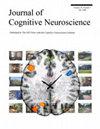Theta Transcranial Alternating Current Stimulation Is Not Effective in Improving Working Memory Performance
IF 3.1
3区 医学
Q2 NEUROSCIENCES
引用次数: 0
Abstract
There is an extensive body of research showing a significant relationship between frontal midline theta activity in the 4- to 8-Hz range and working memory (WM) performance. Transcranial alternating current stimulation (tACS) is recognized for inducing lasting changes in brain oscillatory activity. Across two experiments, we tested whether WM could be improved through tACS of dorsomedial PFC and ACC, by affecting executive control networks associated with frontal midline theta. In Experiment 1, after either a 20-min verum or sham stimulation applied to Fpz–CPz at 1 mA and 6 Hz, 31 participants performed WM tasks, while EEG was recorded. The tasks required participants to either mentally manipulate memory items or retain them in memory as they were originally presented. No significant effects were observed in behavioral performance, and we found no change in theta activity during rest and task after stimulation. However, alpha activity during retention or manipulation of information in WM was less strongly enhanced during the delay period after verum stimulation as compared with sham. In Experiment 2 (n = 25), tACS was administered during the task in two separate sessions. Here, we changed the order of the stimulation blocks: A 25-min task block was either accompanied first by sham stimulation and then by verum stimulation, or vice versa. Again, we found no improvements in WM through either tACS after-effects or online stimulation. Taken together, our results demonstrate that theta frequency tACS applied at the midline is not an effective method for enhancing WM.θ经颅交流电刺激对提高工作记忆能力无效
大量研究表明,4-8 赫兹范围内的额中线θ活动与工作记忆(WM)表现之间存在重要关系。经颅交变电流刺激(tACS)被认为能诱导大脑振荡活动发生持久变化。在两项实验中,我们测试了经颅交变电流刺激是否能通过影响与额中线θ相关的执行控制网络,改善背内侧pFC和ACC的工作记忆能力。在实验 1 中,在对 Fpz-CPz 以 1 mA 和 6 Hz 的频率进行 20 分钟的真刺激或假刺激后,31 名参与者执行了 WM 任务,同时记录了脑电图。这些任务要求参与者在头脑中操作记忆项目或将其保留在最初呈现的记忆中。在行为表现方面没有观察到明显的影响,而且我们发现在刺激后的休息和任务期间,θ 活动没有变化。然而,与假刺激相比,在保留信息或在 WM 中操作信息时,α 活动在真刺激后的延迟期的增强程度较低。在实验 2(n = 25)中,tACS 分两次在任务期间进行。在这里,我们改变了刺激区块的顺序:一个 25 分钟的任务块要么先进行假刺激,然后再进行真刺激,要么相反。我们再次发现,无论是通过 tACS 后效应还是在线刺激,WM 都没有得到改善。综上所述,我们的研究结果表明,在中线应用θ频率tACS并不是增强WM的有效方法。
本文章由计算机程序翻译,如有差异,请以英文原文为准。
求助全文
约1分钟内获得全文
求助全文
来源期刊
CiteScore
5.30
自引率
3.10%
发文量
151
审稿时长
3-8 weeks
期刊介绍:
Journal of Cognitive Neuroscience investigates brain–behavior interaction and promotes lively interchange among the mind sciences.

 求助内容:
求助内容: 应助结果提醒方式:
应助结果提醒方式:


